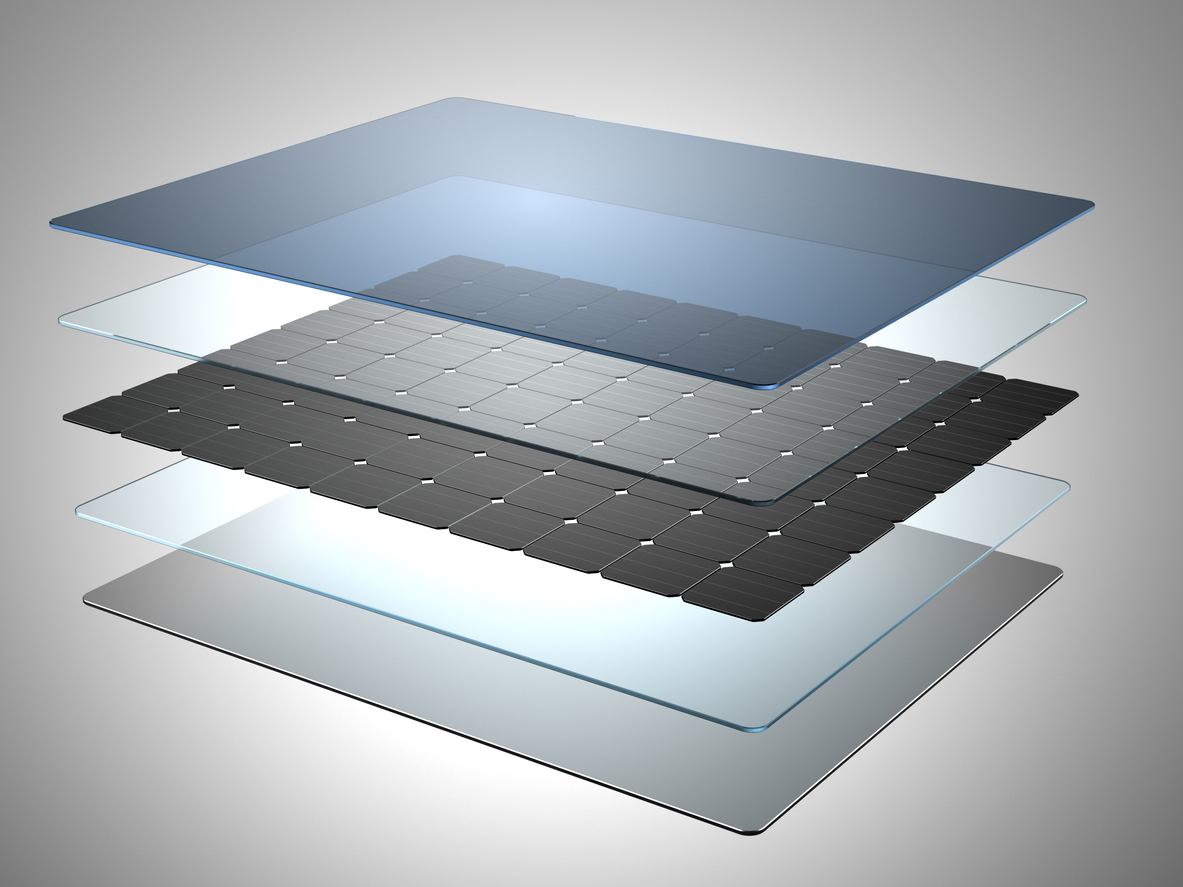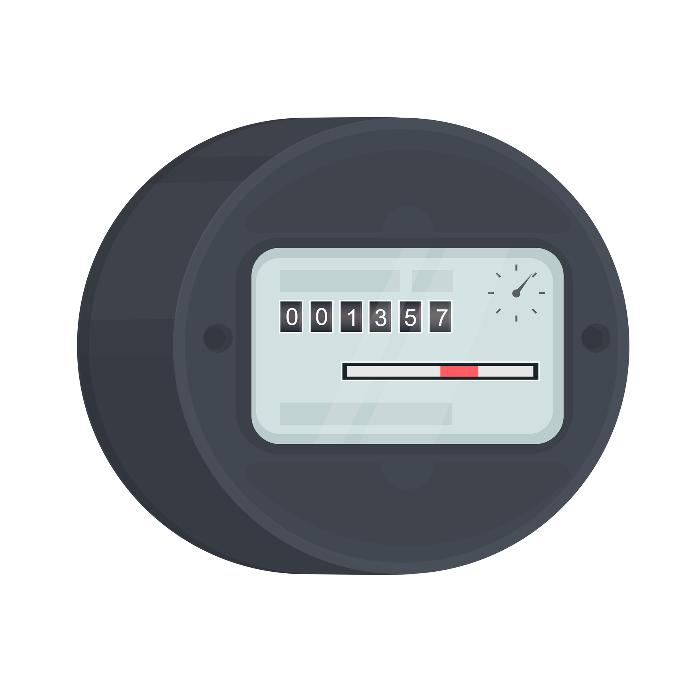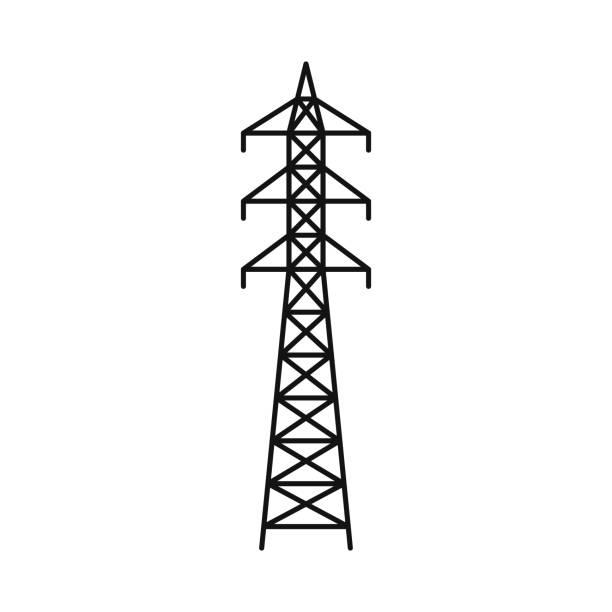Fonctionnement des panneaux solaires et d'une installation photovoltaïque
Découvrez le fonctionnement
d'une
installation photovoltaïque
A photovoltaic system is made up of various components, the main ones being the panels and the inverter. The panels are made up of photovoltaic cells that convert sunlight into direct current. The direct current is then transformed into alternating current that can be used by your electrical appliances via the inverter.
The inverter is connected to your electricity meter, which in turn is connected to the general distribution network, so that you can draw electricity from it or inject it depending on your production and your level of self-consumption.
A monitoring system lets you track and control the production and performance of your photovoltaic panels in real time, via smartphone, tablet or computer.
Note that it is light that is transformed into electricity, not heat. Photovoltaic panels therefore work perfectly well in cold climates, but preferably out of the shade, which significantly reduces their performance.

The composition of a photovoltaic panel
A panel is made up of different stacked layers. One of these layers is a set of photovoltaic cells made of crystalline silicon, a semiconductor element that uses the energy of light photons to produce direct current.
Silicon is made from sand or quartz and can be 100% recycled. Photovoltaic cells are linked together by various elements such as copper or silver.
This layer of photovoltaic cells is encapsulated in an aluminium frame, glass panels and an electrical box, which enables the panel to be connected to the rest of the installation and the electricity produced to be used.
The inverter, an essential part of your photovoltaic installation
The inverter is the device that transforms the direct current produced by your panels into alternating current compatible with your electrical devices.
There are two types of inverter: central inverters and micro inverters. The central inverter is placed close to the electrical box, in a well-ventilated area because it generates heat. It provides overall supervision of your installation's performance.
Micro-inverters are placed directly under the photovoltaic panels. A little more expensive, they offer more precise supervision of your installation's performance, panel by panel.


The inverter, an essential part of your photovoltaic installation
The inverter is the device that transforms the direct current produced by your panels into alternating current compatible with your electrical devices.
There are two types of inverter: central inverters and micro inverters. The central inverter is placed close to the electrical box, in a well-ventilated area because it generates heat. It provides overall supervision of your installation's performance.
Micro-inverters are placed directly under the photovoltaic panels. A little more expensive, they offer more precise supervision of your installation's performance, panel by panel.

The electricity meter
This measures your electricity consumption. The unit of measurement is the kilowatt-hour. Your electricity supplier calculates your energy bill on the basis of your consumption index. Thanks to a photovoltaic installation, this index is revised downwards.

The distribution network
The electricity is generated and transmitted via high-voltage lines to the distribution network. The distribution network operators then supply each locality, each district and each house. They also maintain the electricity network in the event of a breakdown.

The monitoring system
Each photovoltaic installation has its own monitoring system. This allows you to analyse the efficiency of your panels and follow the performance of your installation in detail from your computer, smartphone or tablet.
Les types de pose pour vos panneaux solaires
Steep roof
The photovoltaic panels are placed on top of the roof using a structure of rails fixed under the tiles using hooks, directly to the roof structure. This is the most common type of installation in our regions.
Flat roof
Also very common in our regions, installing photovoltaic panels on a flat roof is very easy and ideal if you don't have a well-oriented sloping roof.
Ground installation
Rooftop installation is the classic installation that everyone is familiar with, but it is also possible to install panels on a structure on the ground. If you have a large plot of land, this is an ideal and easy option.
Front facade installation
Less traditional and not installed by Neopower, the installation of solar panels on a facade can be an alternative to a more traditional installation in the case of a heavily shaded roof, or simply because of a lack of available space.
Panel strings and shading
To convert solar energy into electricity efficiently, solar panels are often installed in series, commonly known as a "string" of panels. A string of solar panels is made up of several photovoltaic panels linked together, forming a chain that is then connected to the central inverter. By connecting the panels in series, the system voltage is optimised and fed back to a single inverter. The number of panels per string is determined by the power of the inverter.
The power of the weakest panel determines the overall power of the string. Shading is therefore the main enemy of solar panels, because shading on a single panel will affect the whole string of panels. To remedy this, a detailed analysis of your project and the building on which the solar panels will be installed is essential :
1. The technical constraints of the building are studied (type and pitch of roof, orientation, load capacity, electrical configuration, possible shading areas, available surface area, etc.).
2. A schematic layout of the installation, also known as a calepinage, is drawn up. This determines the position of the panels on the roof. If there are areas of shadow on one or more panels, optimisers or even micro-inverters can be proposed so that each panel can operate individually if necessary.

Recycling a photovoltaic panel
The manufacture of photovoltaic panels obviously has an impact on the environment, but this is reduced by recycling. Today, almost 94% of a photovoltaic panel can be recycled.
Since 2016, panel manufacturers and importers have been obliged to take back broken or faulty panels free of charge at the end of their life. They are required to pay a €4 eco-participation fee for each panel placed on the market, in order to manage and organise its recycling.
In Europe, the dismantling and recycling of photovoltaic panels has been handled by the PV Cycle association since 2007.

Recycling a photovoltaic panel
The manufacture of photovoltaic panels obviously has an impact on the environment, but this is reduced by recycling. Today, almost 94% of a photovoltaic panel can be recycled.
Since 2016, panel manufacturers and importers have been obliged to take back broken or faulty panels free of charge at the end of their life. They are required to pay a €4 eco-participation fee for each panel placed on the market, in order to manage and organise its recycling.
In Europe, the dismantling and recycling of photovoltaic panels has been handled by the PV Cycle association since 2007.
Are you convinced? Join our community of self-producers !
